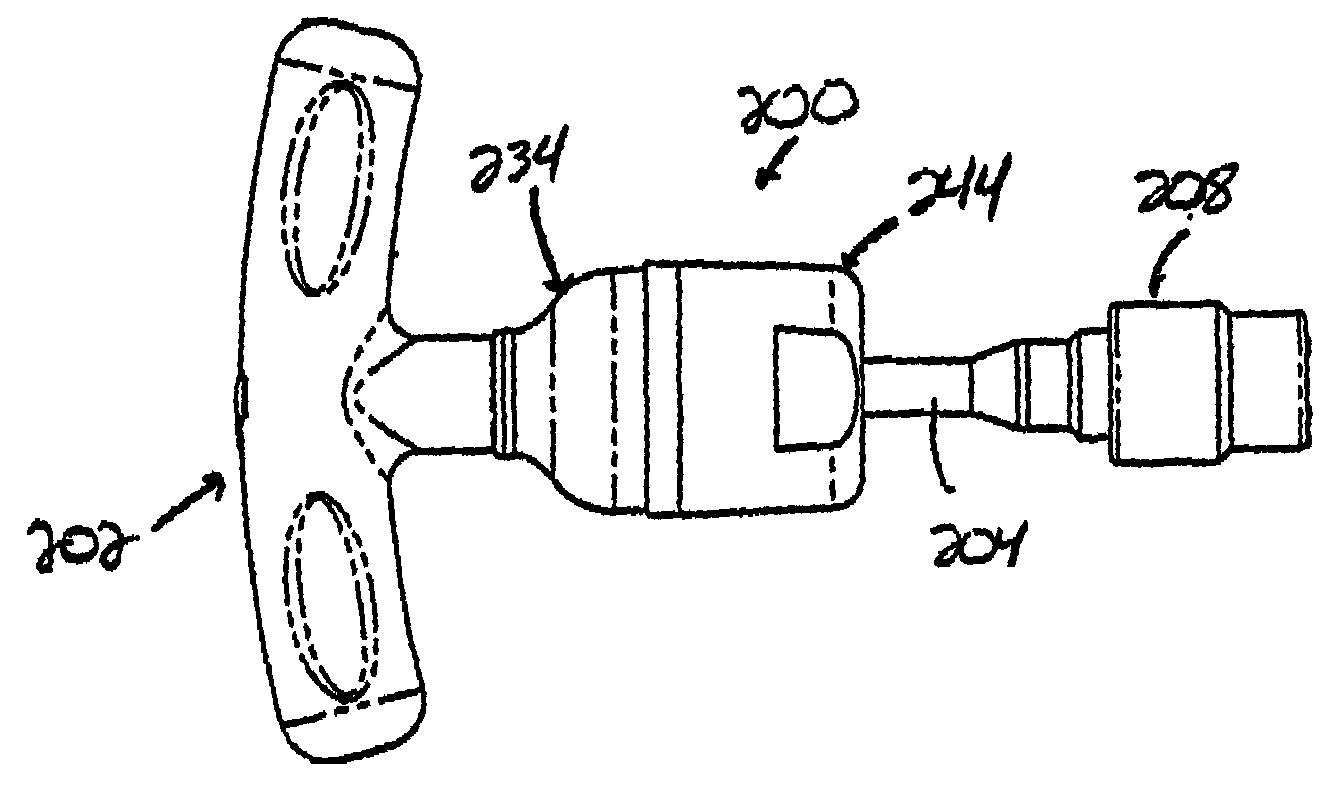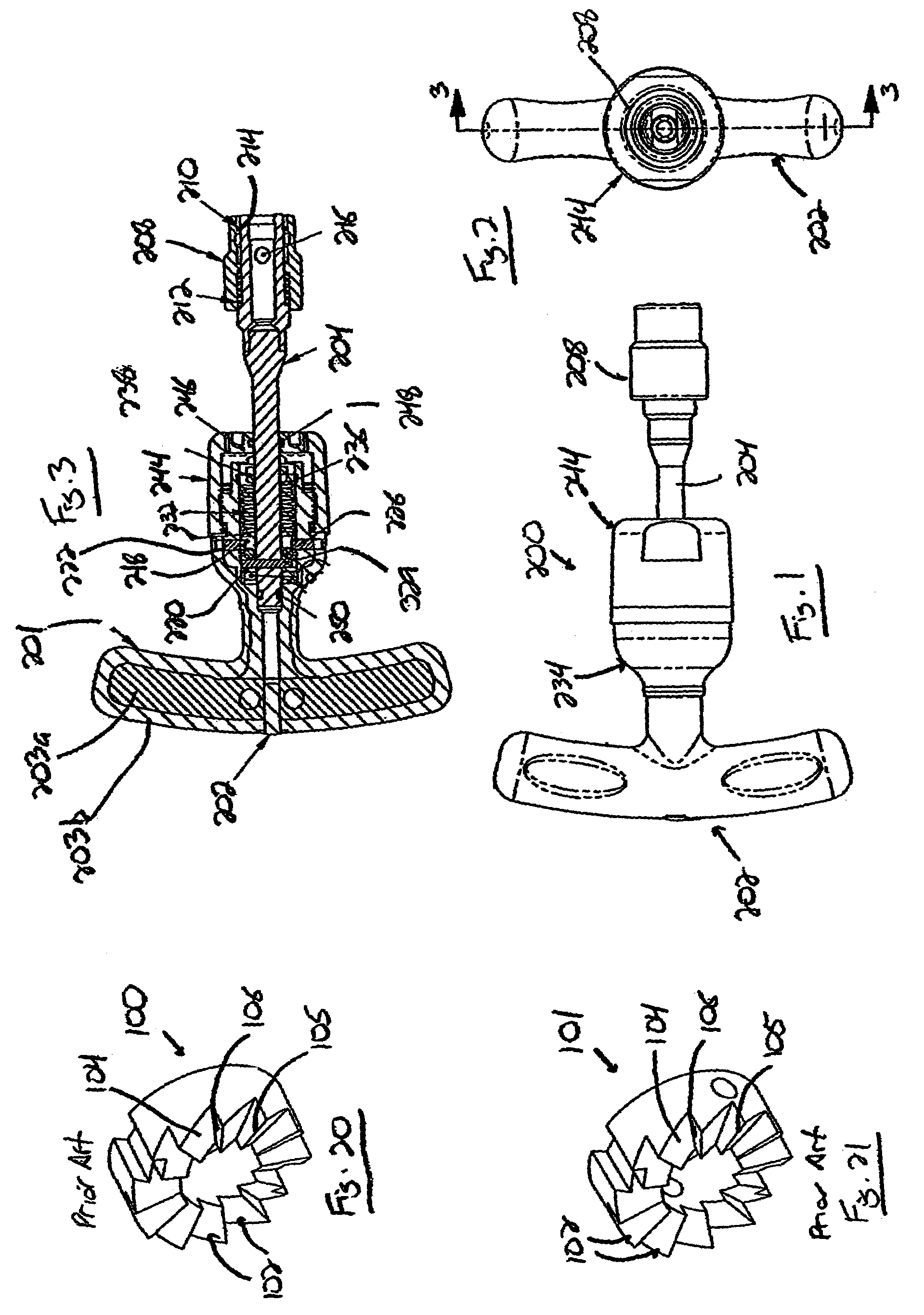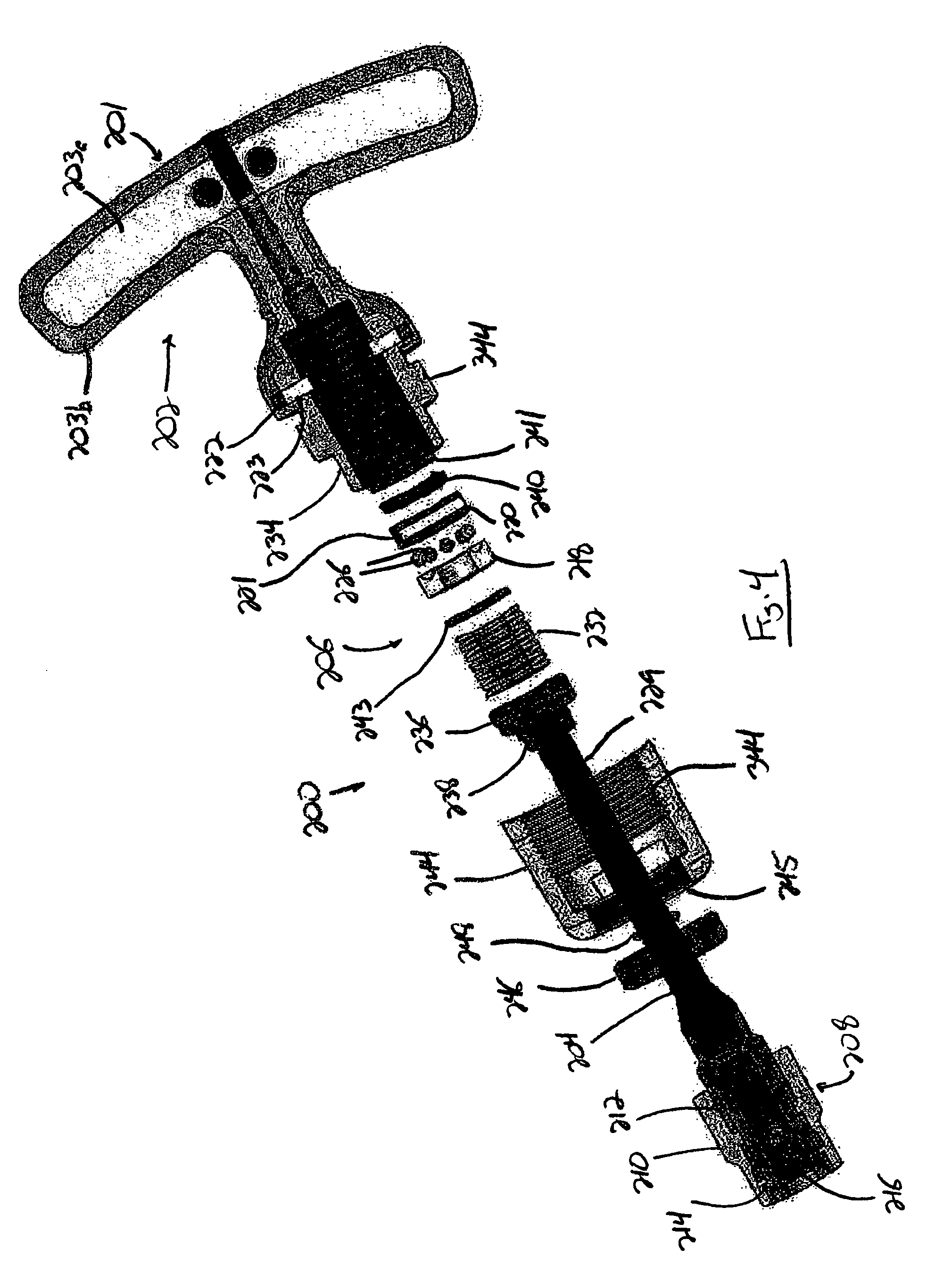Torque-limiting mechanism
a torque limit and mechanism technology, applied in the field of tools, can solve the problems of internal components breaking, reducing the service life of the device, and reducing the consistent torque value, so as to reduce the variation, avoid significant recoil or snap, and reduce the effect of wear
- Summary
- Abstract
- Description
- Claims
- Application Information
AI Technical Summary
Benefits of technology
Problems solved by technology
Method used
Image
Examples
Embodiment Construction
[0036]With reference now to the drawing figures in which like reference numerals designate like parts throughout the disclosure, a tool including a torque-limiting mechanism constructed according to the present invention is indicated generally at 200 in FIGS. 1-4. The tool 200 can be virtually any type of hand-held or power-driven tool that is used to apply torque to a driven member, e.g., a fastener, but in a preferred embodiment, is a hand-held torque wrench that includes a handle 202 with a gripping part 201 operatively connected to a drive body 204 extending outwardly from the handle 202 by the torque-limiting mechanism 206. The handle 202 is preferably formed of a suitably rigid, but relatively lightweight material, such as a light metal or plastic, to reduce the weight of the tool 200. Also, the handle 202 can be formed to have any desired configuration, and may include on the gripping part 201 an inner portion 203a formed of a more rigid material, and an outer portion 203b of...
PUM
 Login to View More
Login to View More Abstract
Description
Claims
Application Information
 Login to View More
Login to View More - R&D
- Intellectual Property
- Life Sciences
- Materials
- Tech Scout
- Unparalleled Data Quality
- Higher Quality Content
- 60% Fewer Hallucinations
Browse by: Latest US Patents, China's latest patents, Technical Efficacy Thesaurus, Application Domain, Technology Topic, Popular Technical Reports.
© 2025 PatSnap. All rights reserved.Legal|Privacy policy|Modern Slavery Act Transparency Statement|Sitemap|About US| Contact US: help@patsnap.com



